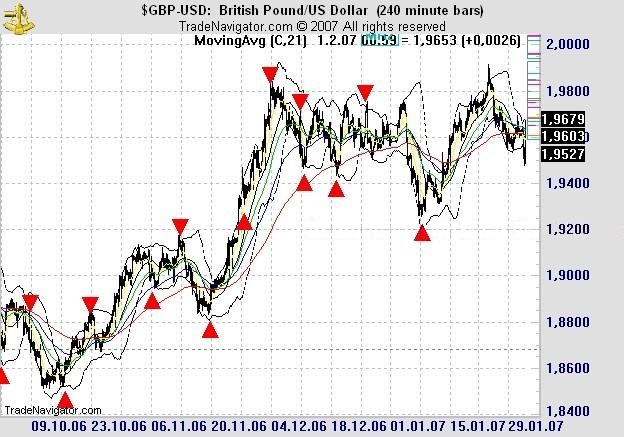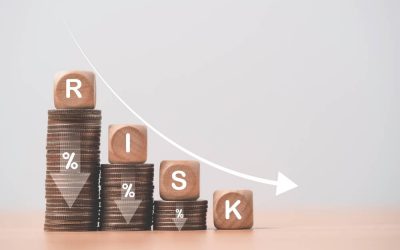
Let’s talk about the Friday-Monday phenomenon. In many markets, reversals and local extremes are often observed on these days. This applies to almost all markets.
Article content
Friday-Monday phenomenon
The graphic data presented below is fairly outdated. But it is of no great importance for the essence of this article. These charts are used as an illustrative example of this phenomenon.
Let’s consider the first example.
GBP/USD. 4H chart. Summer-Autumn 2006.
The vertical lines represent separation by weeks. Red triangles mark local extremums created on Friday or Monday. On this chart, which covers 4 months, there are 26 local extremes. 16 extremes occurred on Friday-Monday. Here we considered range trading to get more extremums.
Let’s look at another example, taking a period that includes trending movements. As you can see, the situation is the same. On Friday and Monday, pullbacks and local lows occur. These are good opportunities to enter the market and then follow the trend. In the second screenshot, we can see 22 local extremums. 13 of them were made during the Friday-Monday period, covering more than six months. Of the 48 extremums, 29 are made at the intersection of weeks. This is 60% of all the cases. And these are already positive statistics, based on which you can develop a new strategy or include it in your existing trading method.
GBP/USD. 4H chart. Winter 2006.
This phenomenon manifests itself in almost all markets.
Here is a chart of futures for the 2007 S&P 500 index.
It is worth noting that the maximum (we can see a pattern of Double Top before the stock market crash in July) was also made on Friday-Monday. One of the peaks was formed on Friday, the other — on Monday.
S&P500. 4H chart. Summer 2007.
Here we have crude oil futures traded on the New York Mercantile Exchange. These tend to hit new highs on Fridays and, in rare cases, — on Mondays.
Oil. 4H chart. Winter 2007.
What is the physics of the phenomenon?
Massive profit-taking at the end of the week is likely to give rise to reversals. Or insiders might do this to take advantage of the prices, using these periods to catch market participants by surprise. When a trader hits the sack on Friday, keeping their long position, then wakes up and the profit is gone.
Whether it is worth guessing about the causes of the phenomenon, one can’t say for sure. But it is worth using it for profitable trading.










